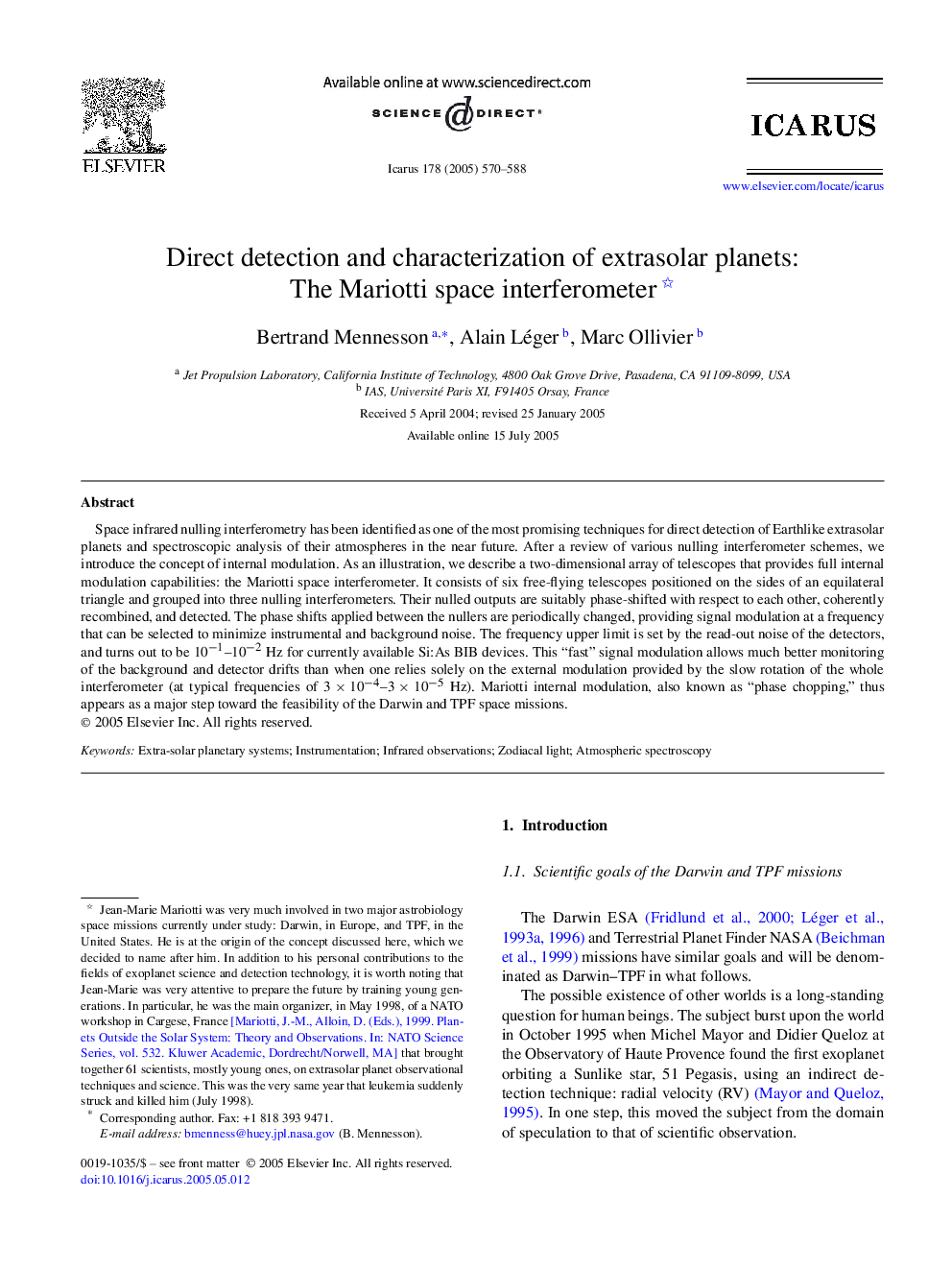| Article ID | Journal | Published Year | Pages | File Type |
|---|---|---|---|---|
| 10701854 | Icarus | 2005 | 19 Pages |
Abstract
Space infrared nulling interferometry has been identified as one of the most promising techniques for direct detection of Earthlike extrasolar planets and spectroscopic analysis of their atmospheres in the near future. After a review of various nulling interferometer schemes, we introduce the concept of internal modulation. As an illustration, we describe a two-dimensional array of telescopes that provides full internal modulation capabilities: the Mariotti space interferometer. It consists of six free-flying telescopes positioned on the sides of an equilateral triangle and grouped into three nulling interferometers. Their nulled outputs are suitably phase-shifted with respect to each other, coherently recombined, and detected. The phase shifts applied between the nullers are periodically changed, providing signal modulation at a frequency that can be selected to minimize instrumental and background noise. The frequency upper limit is set by the read-out noise of the detectors, and turns out to be 10â1-10â2Hz for currently available Si:As BIB devices. This “fast” signal modulation allows much better monitoring of the background and detector drifts than when one relies solely on the external modulation provided by the slow rotation of the whole interferometer (at typical frequencies of 3Ã10â4-3Ã10â5Hz). Mariotti internal modulation, also known as “phase chopping,” thus appears as a major step toward the feasibility of the Darwin and TPF space missions.
Related Topics
Physical Sciences and Engineering
Earth and Planetary Sciences
Space and Planetary Science
Authors
Bertrand Mennesson, Alain Léger, Marc Ollivier,
